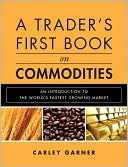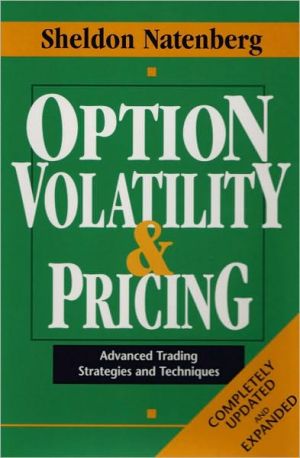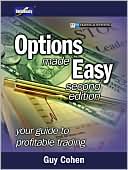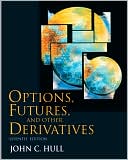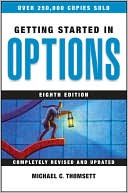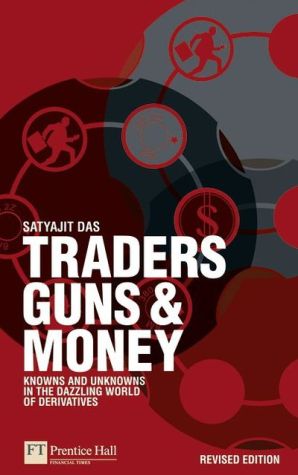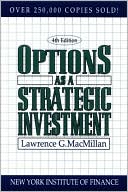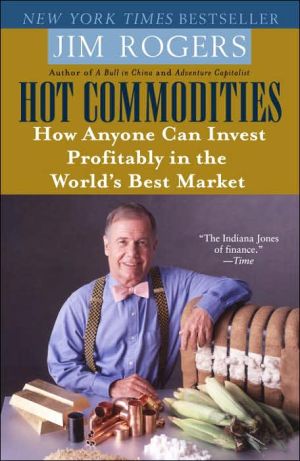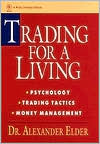A Trader's First Book on Commodities: An Introduction to The World's Fastest Growing Market
Search in google:
“This book provides the type of information every trader needs to know and the type of information too many traders had to learn the hard and expensive way. Carley offers practical need-to-know, real-world trading tips that are lacking in many books on futures. It will help not only the novice trader, but seasoned veterans as well. This book will serve as a must-have reference in every trader’s library.”—Phil Flynn, Vice President and Senior Market analyst at PFGBest Research, and a Fox Business Network contributor“Refreshing–It’s nice to see a broker who has actually been exposed to the professional side of trading and who bridges that chasm between exchange floor trading and customer service. Carley takes the time to explain verbiage, not just throw buzz words around. A good educational read in my opinion.”—Don Bright, Director, Bright Trading, LLC“This book has the perfect name, the perfect message, and the necessary information for any beginning trader. Take this book home!”—Glen Larson, President, Genesis Financial Technologies, Inc.“As a 35-year veteran of the CME/CBOT trading floor, I can tell you…those who think they can begin trading commodities without knowing the less talked about topics that Carley discusses in A Trader’s First Book on Commodities are sadly mistaken. Anyone who trades their own account, or would like to, should read this book.”—Danny Riley, DT TradingThe Simple, Practical, 100% Useful How-To Guide for New Commodities TradersYou can make large profits by trading commodities—but you’ll need significant practical knowledge of the associated risks and market characteristics before you start. That’s where this book comes in. You won’t find boring theory or bewilderingly complex trading strategies here. You will find specific guidance on accessing commodity markets cost-effectively, avoiding common beginners’ mistakes, and improving the odds of successful, profitable trades.Drawing on her extensive experience teaching traders, Garner shows how to calculate profit, loss, and risk in commodities, and choose the best brokerage firm, service level, data sources, and market access for your needs.Garner demystifies the industry’s colorful language, helps you clearly understand what you’re buying and selling, and walks you through the entire trading process. She concludes with a refreshingly new look at topics such as trading plans, handling margin calls, and even maintaining emotional stability as a trader.Know the players, know the language, know the techniquesMaster the basics painlessly and avoid beginner’s mistakesChoose the right brokerages, services, trading platforms, and toolsGet what you need; don’t pay for what you don’t needMake sense of confusing commodities quotesKnow what you’re buying, what it costs, the returns you’re earning, and the risk you’re takingBuild a flexible trading plan that worksPredict price, manage risk, and make trades that reflect your analysis Library Journal Garner (Commodity Options), a market analyst and commodities broker, has written an easy-to-understand beginner's guide to commodities trading, commodities being bulk goods traded on a financial exchange, everything from coffee to cocoa, gold, platinum, and currency. She covers the history of commodities trading, the lingo (Chapter 14 does a nice job of defining "Futures Slang and Terminology"), how to choose a brokerage firm, as well as how to find a broker who will work well with your particular needs. Her coverage is international in scope, showing her extensive knowledge, although she is relatively new to the vocation. There is up-to-date information on what to look for when considering commodities trading—from margin calls to stock indexes to maintaining a balanced outlook in the face of possible fear, greed, frustration, or loss. VERDICT Highly recommended for anyone who is interested in exploring the world of commodities trading, whether to do some trading or simply to get a better understanding of this area of finance.—Helena Travka, Cleveland P.L.
Introduction The Rise and Fall of Commodities 1A Commodity Rally for the History Books 1A Day of Reckoning 7The Speculators’ Role 8Fortunes Made and Lost 10Conclusion 13Chapter 1: A Crash Course in Commodities 15How It All Began 15The CME Group 17Evolution of the Forward Contract into a Futures Contract 18Cash Market Versus Futures Market 21Contract Expiration 23The Mechanics of Futures Contracts 25Futures Spreads 32A Brief Introduction to Commodity Options 33Chapter 2: Hedging Versus Speculating 37Commodity Hedgers 37Commodity Speculators 42Chapter 3: The Organized Chaos of Open Outcry and the Advent of Electronic Trading 45The Pit 46Electronically Traded Markets 47“Side by Side” 48Costly Commodity Quotes 54Open Outcry Quote Reporting and Access 54Electronic Quote Transmission 56Subscribing to Quotes 57Charting 58Free Trading Platforms and Market Access 58Paid Trading Platforms 59Auto Approval Versus Manual Approval 60Order Desk (“The Desk”) 62Is It Worth Paying Platform Fees or Subscribing to Quotes? 63Chapter 5: Choosing a Brokerage Firm 65Introducing Brokers, Futures Commission Merchants, and Broker/Dealers 66Fill Quality 69Behind the Scenes of Transaction Costs 70Discount Brokerage or Full-Service Specialization 71What You Should Know About Commission Structure: Blanket or Variable Rates? 72Market Access 75Beyond Your Broker 77Conclusion 79Chapter 6: Finding a Broker That “Fits” and Choosing a Service Level 81Understand Your Broker’s Business 83Get to Know Your Futures Broker 84Full Service Broker or Self Directed Online? 88Why Using a Broker May Be a Good Idea 90Conclusion 93Chapter 7: Order Types and How to Use Them 95Order Types 95Placing a Trade with Your Broker 108Placing a Trade Online 111Chapter 8: Making Cents of Commodity Quotes 113Quoting Grain Futures 115Not All Grains Are Created Equal 119The Meats 122Foods and Fiber 125Precious Metals Futures 130Gold, Platinum, and Palladium Futures 131The Other Metal Futures 133Chapter 9: Figuring in Financial Futures–Stock Indices, Interest Rates, and Currencies 137The Boring but Necessary Basics 137Stock Index Futures 138Dow Jones Industrial Average Futures 141NASDAQ 100 Futures 143S&P 500 Futures 146Russell 2000 Futures 151Interest Rate Futures 151Treasury Bond and Note Futures 153Eurodollar Futures 164Currency Futures 167Conclusion 170Chapter 10: Coping with Margin Calls 171What Is Margin? 171Day Trading Margin Versus Overnight Margin 172How to Handle a Margin Call 173The Margin Call Countdown 175Accepting Margin Calls 177Chapter 11: The Only Magic in Trading–Emotional Stability 179Three Emotions in Trading: Fear, Greed, Frustration 181Revengeful Trading Is Counterproductive 187Capital Preservation aka Risk Management 188Chapter 12: Trading Is a Business–Have a Plan 189The Trading Game Plan 190A Trading System Alone Isn’t a “Business Plan” 191Constructing a Business Plan in Trading 195Price Speculation (Ideally Prediction) 196Choosing a Trading Vehicle 198Risk Management 199Chapter 13: Why You Should Speculate in Futures 207Speculating in Futures Versus Speculating in Equities 208Risk Capital Only 214Conclusion 215Chapter 14: Futures Slang and Terminology 217Bull Versus Bear 217Spread 219Contract Month Slang 220Red Months 220Fill 221Blow Out 222Blow Up 222Keypunch Error 222Busted Trade or Moved Trade 223Net Liq 224Equity 224Beans 225Commodity Currency 226Dead Cat Bounce 226Bottom Fishing 227Chasing the Market 227Limit Moves 228The Tape 228Trading Solution and Front-End Platform 229Proprietary Trading 229Running Stops 229Short Squeeze 230Babysitting 230Scalp 231Slippage 231Working Order 232Unable 232Handle 232Overbought/Oversold 233Debit/Account Debit 233Round Turns 233Trading Environment 234Index 235
